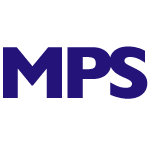
In a previous article, we answered the question “What is MRP (Material Requirements Planning)?" To summarize, MRP is a software algorithm that results in an inventory plan for the purchase, manufacture and transfer of items such that inventory levels are minimized and service levels are maximized. To produce this plan, MRP takes into account many variables at all levels of the Bill of Materials, including how much inventory is on hand, where it is located, when more will be received, how long it takes to replenish and time phased demand.
How does Master Production Scheduling work?
Master Production Scheduling (MPS) implements the same logic as MRP, with a twist; it enables you to define a forecast.
So, what is the business case that warrants MPS? There are several, but here is a very common example. A pump manufacturer sells make-to-order products, assembling and then shipping them within 48 hours of taking the order. The manufacturing lead time is one day, but there are components and subassemblies that go into the pump with lead times that vary from two (2) days to two (2) months. To fulfill every order within 48 hours, the pump manufacturer must have, on hand, every component for each pump when the order is taken. And to remain profitable, it must do so without carrying excess inventory.
We could accomplish this with MRP by defining Reorder Levels and Out Up-To Levels on all components and subassemblies that is sufficient to cover a lead time’s worth of demand plus an additional buffer amount for variability. Remember, we discussed these concepts in the MRP article.
MPS, incidentally, can enforce those same rules. This actually works when demand is smooth and consistent throughout the year, and MRP has utilities to determine these levels based on prior demand.
But, how do we handle seasonality? What about sales promotions? Ramping up for the introduction of a new product or product line is also tricky. Even steadily rising or declining demand for existing products is problematic.
This is where MPS shines. Remember, the big difference between MPS and MRP is the forecast that MPS supports. The MPS forecast becomes the demand driver for lower level subassemblies and purchased items. Just as MRP creates planned manufacture, purchase, and transfer orders, so does MPS. The MPS forecast enables us to turn the business plan into our best approximation for the impact of seasonality, promotions, and rising or decreasing demand for individual items of product families. Unlike MRP planned orders, however, MPS planned orders are rarely released.
“What?” you say. “MPS planned orders are rarely released?” Then why bother?
Because, these orders, which represent a time-phased netting of the forecast demand, actual demand, on hand and expected receipts, drive MRP and its planned orders. In fact, for this very reason, we always run MPS before we run MRP, because the planned orders from MPS are demand drivers for MRP. The MRP orders are released to ensure that purchased items and subassemblies are on hand in the correct quantities and in the right place, so that when we receive the next sales order for an MPS item, we can build and ship it right away.
Another scenario that might help you understand the power of MPS is that of the manufacturer of helicopter harnesses. By contract, the manufacturer receives an annual build schedule from its customers. The schedules do not have exact delivery dates, but they do provide gross monthly requirements by item for the next twelve months. The exact delivery dates are, by contract, provided a one month before delivery. The problem? Every item has components on its Bill of Materials (BOM) with lead times significantly greater than one month. A stock out is catastrophic.
The solution, in this case, is MPS. As soon as it is received, the customer’s annual build schedule is loaded into MPS as a forecast. The MPS is then run on a daily basis, with a time horizon that looks out just beyond the longest lead time of any item on the BOM. The resulting planned MPS orders are never released. However, these orders appear as demand to MRP, which is run immediately following MPS. Each month, when it is received, the delivery schedule is loaded as sales order lines with actual due dates. Actual work orders linked to the sales order lines are automatically generated.
MPS implements a concept called Time Fences. The value represents a number of days and is set by item. Outside the time fence, MPS plans based on the larger of actual demand or forecast demand. Inside the time fence, MPS plans based on actual demand only. In the case of our wiring harness manufacturer, the time fence is 30 days because, by contract, their customer must provide them with delivery dates a month ahead of time. In other words, the sales orders and resulting automatically generated work orders will always exist inside the time fence.
What are the Benefits of Master Production Scheduling?
Companies that successfully implement Master Production Scheduling do so, in part, because they recognize that its purpose is not to tell them which finished items to build, when, and in what quantities. Rather they embrace that it provides the means by which the management team can turn a business plan into a forecast that drives the production and procurement of lower level, longer lead time items.
Likewise, a successful MPS implementation requires a culture shift. The forecast must reflect the business plan. This requires constant tuning and updates from all departments. When Marketing plans a promotion, the expected bump in demand must be reflected in the MPS forecast. The Sales team de-emphasizing an older product line in favor of a newer one requires updating the forecasts for both. Product development influences the introduction of new products, necessitating updates to the forecast in collaboration with Sales and Marketing.
The benefits of MPS to a management team that constantly and collaboratively fine-tunes their forecasts are significant. In the beginning of this article, we looked at two cases where MPS solved the age-old problem of producing a cost effective procurement and production plan for lower level items in the Bill of Material with lead times longer than the sales order fulfillment time. There are other benefits as well. Finance can benefit from a view of the plan that projects revenues and costs based on planned MPS and MRP orders. This view uses average sales prices calculated over a specified timeframe to produce a revenue figure and nets it against current costs. Think cash flow projections! Likewise, Finance and Manufacturing can benefit from rough-cut capacity views that project both the labor costs and capacity requirements by work center, based on planned MPS and MRP planned orders.
Finally, once part of the culture, managing the forecast requires collaboration across departments that should, but often does not occur. This alone is a significant benefit. More than once I have visited companies who were in the midst of great upheaval. They did not yet use MPS. Why? Because sales and marketing had embarked on a promotional campaign without consulting production and purchasing, only to learn that the resulting bump in sales could not be fulfilled because lower level, longer lead time components were unavailable in sufficient quantities. In a nutshell, MPS provides the organization with a platform from which to be proactive, to model, and ultimately execute the business plan.
What is MRP (Material Requirements Planning)?
This is the second in a series of articles to explore Inventory management, EOQ (Economic Order Quantity), Inventory planning, Distribution MRP or DRP (Distribution Requirements Planning), MPS (Master Production Schedule), ISO certifications, how to use MRP, and how to choose the best MRP software.
